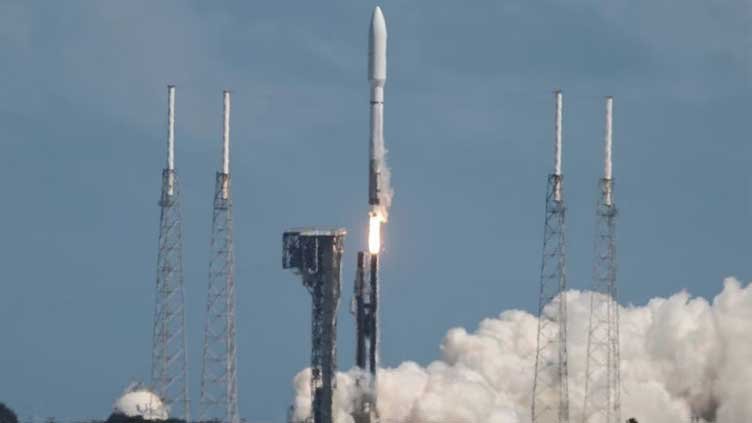By Haris Sheikh
PLD Space Rockets into History with Miura-1 Launch
In the wee hours of Saturday, a Spanish trailblazer, PLD Space, ignited a beacon of hope for Europe’s space aspirations. They launched their recoverable Miura-1 rocket from a launch site nestled in the serene landscapes of southwest Spain, marking Europe’s inaugural fully private rocket launch.
This endeavor was no easy feat, as the startup had faced two previous launch attempts that were thwarted. However, perseverance paid off, and the Miura-1 rocket, christened after the valiant fighting bull breed, finally took flight. This towering marvel, reaching heights akin to a three-story building, boasts a cargo capacity of 100 kilograms (220 pounds).
While this launch bore a payload for testing, it was a payload that would not be released, as the company clarified. Yet, what unfolded on mission control screens was a scene of jubilation, with engineers cheering and exchanging congratulations as the rocket ascended into the velvety night sky.
Raul Torres, the triumphant CEO of PLD Space, exclaimed, “My voice is shot after so much shouting.” He shared his elation and revealed that all rocket systems had performed “perfectly.” Looking ahead, he declared the launch as “just the beginning” and revealed plans to triple the company’s workforce.
Spain’s acting Prime Minister, Pedro Sanchez, joined the chorus of celebrations on social media. He lauded the achievement of launching Miura 1, the first rocket entirely powered by Spanish technology. This achievement, he noted, elevates Spain’s research and development to the forefront of space transportation.
While the flight’s duration spanned 306 seconds, it fell short of one expectation. The rocket’s maximum altitude, reaching 46 kilometers, barely achieved half the height envisioned by mission planners, as reported by space.com.
Despite this deviation, the partially reusable launcher executed a graceful descent into the Atlantic Ocean. The company affirmed its intent to recover the rocket later on Saturday, a testament to their commitment to both innovation and sustainability.
Miura-1 Rockets Past Challenges: A Triumph of Tenacity
May marked the maiden attempt to launch the Miura-1 rocket, but the venture was thwarted by the capricious nature of high-altitude winds. A second endeavor in June, while fraught with anticipation, faltered when umbilical cables in the avionics bay hesitated to release in harmony, casting a veil of smoke and flames over the launch site.
As anticipation rippled through the air, high-security measures were set in motion, with airspace, stretches of the sea, and roads promptly cordoned off in preparation for the third lift-off endeavor.
Bridging the Launch Gap: Europe’s Small Satellite Dreams
Europe’s ambitions in the realm of launching small satellites into space have come under the spotlight, particularly following Virgin Orbit’s mishap during a British orbital rocket launch in January. The endeavor, which involved releasing the launcher from a converted Boeing 747, encountered setbacks that drew attention to the burgeoning competition vying to launch small payloads.
Notable contenders in this race hail from Scotland, Sweden, and Germany, each eyeing a slice of the cosmic pie. These burgeoning endeavors underscore the growing interest in harnessing the potential of small satellites for a myriad of applications.
Miura-1’s Suborbital Pioneering: The Prelude to Bigger Aspirations
Saturday’s mission with the Miura-1 demonstrator marked the inception of two planned suborbital missions. However, analysts emphasize that the true litmus test lies ahead with the development of orbital services for the larger Miura-5, a grand vision slated for realization in 2025.
The suborbital missions serve as stepping stones, paving the way for more ambitious endeavors. As the Miura-1 surges forward, it ushers in a new era of exploration, promising a myriad of possibilities on the horizon.
Navigating Troubled Skies: Challenges on Europe’s Cosmic Journey
The recent small rocket launch is set against the backdrop of upheavals in Europe’s mainstream space endeavors. In July, the curtain fell on Europe’s largest rocket, the venerable Ariane 5 space launcher, during its final launch at the European spaceport in Kourou, French Guiana.
For years, Europe had relied on the mighty Ariane 5, boasting a payload capacity exceeding 11 tonnes, for ambitious missions. In addition, Russia’s Soyuz launcher played a crucial role in ferrying medium payloads to the stars, while Italy’s Vega, also launched from Kourou, catered to the realm of smaller payloads.
The departure of Ariane 5 has left Europe grappling with a void in autonomous space access until the awaited successor, Ariane 6, graces the cosmic stage. However, this transition has been fraught with delays, pushing Ariane 6’s launch to the upcoming year.
In a further twist of fate, Russia, in response to European sanctions related to the Ukraine conflict, suspended access to Soyuz. The revamped Vega-C rocket faced its own tribulations, with technical issues leading to its grounding.
The European Space Agency confirmed just last week that Vega-C would not resurface in service until the fourth quarter of 2024, following a mission failure in December of the prior year. These hurdles have cast a shadow over Europe’s space aspirations, but as the Miura-1’s triumphant flight demonstrates, the spirit of exploration and innovation remains undaunted.
In conclusion, the Miura-1 rocket’s triumphant flight stands as a testament to human perseverance and innovation in the face of adversity. Europe’s aspirations in the realm of small satellites and space exploration remain vibrant, even as it grapples with challenges in its mainstream space activities. As the cosmic journey continues, it is imperative to foster collaboration, embrace resilience, and invest in emerging technologies to navigate the ever-expanding frontiers of space. The future of space exploration holds immense potential, and by learning from both successes and setbacks, we can pave the way for even greater achievements in the cosmic domain.
Subscribe our website for latest updates:
https://republicpolicy.com/shop/
Read More















